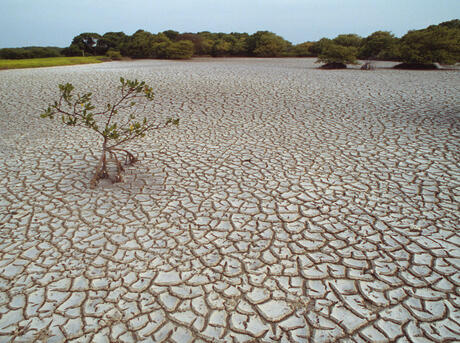
Did you know that quinoa is known for its remarkable adaptability to different environmental conditions, including drought-prone regions? Unfortunately, climate change means more unstable conditions and so farming more resilient crops like quinoa helps secure the future of our food.
-
Drought Tolerance: Quinoa is considered a drought-tolerant crop. It has evolved to survive and thrive in the arid and high-altitude regions of the Andes, where water scarcity is a common challenge. Quinoa has developed mechanisms to withstand dry conditions, including deep root systems that enable it to access water from deeper soil layers.
-
Water Use Efficiency: Quinoa generally requires less water compared to other staple crops such as rice. It is more water-efficient due to its ability to adapt to dry environments. However, it's important to note that water requirements can vary depending on specific cultivation practices, climate conditions, and soil types. Additionally, different quinoa varieties may have varying water needs.
-
Dryland Farming: Quinoa is often cultivated in dryland or rainfed systems, relying primarily on natural rainfall rather than irrigation. This makes it a suitable crop for regions with limited access to irrigation or where water resources are scarce. Dryland farming practices aim to conserve soil moisture and optimize water use efficiency through techniques like moisture conservation, mulching, and appropriate timing of planting and irrigation (if needed).
-
Soil Moisture Management: Proper soil moisture management is crucial for successful quinoa cultivation in drought-prone areas. Conservation practices such as using organic matter to improve soil structure and moisture retention, minimizing soil disturbance through reduced tillage or no-till farming, and employing efficient irrigation methods when irrigation is necessary can help optimize water use efficiency.
-
Climate Change Impact: Climate change can affect water availability and precipitation patterns in quinoa-growing regions. Shifts in rainfall patterns, prolonged droughts, or changes in seasonal rainfall distribution can pose challenges to quinoa cultivation. It highlights the importance of resilient agricultural practices, including crop diversification, water management strategies, and research and development efforts focused on breeding more drought-tolerant quinoa varieties.
Overall, quinoa's natural adaptation to drought conditions and its ability to grow in dryland environments make it a valuable crop for water-scarce regions. Its low water requirements compared to certain other crops, such as rice, contribute to its appeal as a more sustainable option in terms of water usage. However, it's essential to manage water resources efficiently and employ sustainable farming practices to ensure the long-term viability and resilience of quinoa cultivation, particularly in the face of changing climatic conditions.
